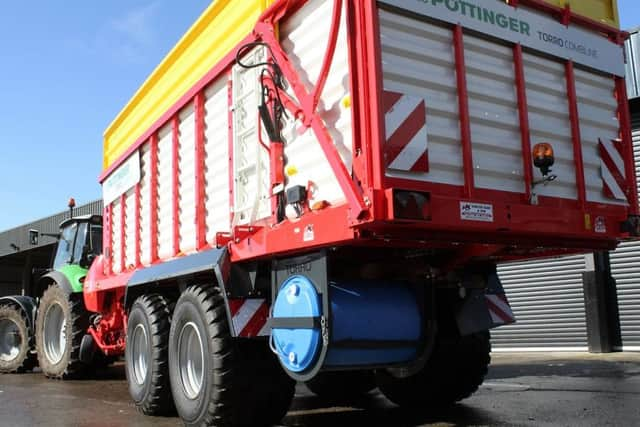First cut silage 2016 '“ a tale of two regions as cutting operations vary


“Last winter saw Northern Ireland pre-disposed to continuous rain in tandem with winds that came predominantly from the North West,” he explained.
“As a consequence, that region stretching from the Foyle right down to parts of South Tyrone has been characterised by poor ground conditions and extremely restricted grass growth rates.
Advertisement
Advertisement
“I know, for example, that farmers in some parts of South Tyrone were only putting fertiliser out on silage ground during last week, such has been the impact of last winter’s floods and the subsequent poor drying conditions on land.
“In total contrast, farmers in counties Down and Armagh enjoyed much more favourable weather conditions, with the result that both slurry and fertiliser were spread around the middle of March.”
Tommy Armstrong now believes that the 2016 silage making season will get underway in sheltered parts of Co Down as early as next week.
“Some bales have already been made from grazing paddocks that were taken out of rotation,” he said.
Advertisement
Advertisement
“But there is every likelihood, that weather permitting, most farmers in Counties Down and Armagh will do their normal mid to late May cutting date.
“Further North, however, it could well be the end of May before the silage season gets underway in earnest.”
The Provita representative strongly urged all farmers and contractors to have grass tested for nitrate levels prior to cutting over the coming weeks.
“The normal rule of thumb is for grass not to be harvested until six weeks after a dressing of nitrogen fertiliser has been applied,” he stressed.
Advertisement
Advertisement
“Farmers should also be mindful that grass growth rates have been much slower across the board this year than normal, thereby increasing the risk of high nitrate levels in fresh forage, particularly in those instances where farmers are going for an early cut.
“We provide a free grass testing service for farmers and contractors using Provita’s Advance+ inoculant.
“If grass samples are left with a Provita representative in the early morning period, then we aim to have the required test results back at lunch time the following day.”
Armstrong also pointed out that Advance+ will also act to reduce the impact of high nitrate levels in fresh grass, should this problem arise.
Advertisement
Advertisement
While indicators such as pH and ME are important in determining the overall quality of grass silages, the most widely recognised indicator of fermentation is the ammonia concentration, expressed as a percentage of the total nitrogen contained within the forage. Significantly, AHDB Dairy now ranks ammonia levels as the most critical factor in determining grass silage fermentation.
“And, given the growing season that we have experienced to date in 2016, this may well be a year in which ammonia levels could be a higher risk than usual, if farmers and contractors do not take the steps required to counteract this possibility.
“Both official EU trials and on-farm mini-silo trials, have confirmed that Advance+ will act to reduce ammonia percentages by on average 33%.
“The clearest verification of this was achieved courtesy of a recent ‘split pit trial’ which saw half the forage in an 800t clamp treated with Advance+. The remainder of the clamp was left untreated.
Advertisement
Advertisement
“Big straw bales were put in place to divide the silo in two with alternate loads of grass treated with the inoculant. So, essentially, we made two separate clamps of silage from the same grass within the one silo.
“The results achieved pointed clearly to the benefits of using Advance+. And this was evident from the very instant the silo was opened. You could see the difference in the colour and the smell of it. The ammonia on the untreated part was 15% and the Ammonia on the treated part was 10%.”
Tommy is also highlighting the prospect of first cut silage grasses containing low sugar levels this year.
“This is a consequence of the low temperatures and the fact that the sun has not shone on too many days so far this spring.
Advertisement
Advertisement
“But again Advance+ will act to ensure that top quality grass silages can be made, even from forages containing exceptionally low sugar levels. The normal level of sugar required would be 2% however we have achieved fermentations with a pH of 4 when sugars were at 0.7%.”
He concluded: “The other key benefit to be accrued from using Advance+ is if we get very dry conditions trials have shown that it will double the number of days that silage can be left exposed to air at feed out before spoilage arises. As a result, wastage levels are significantly reduced.”